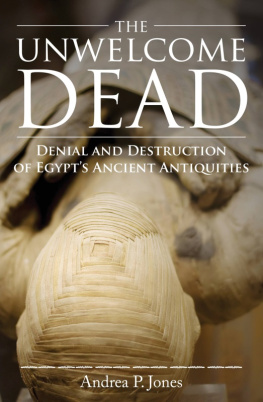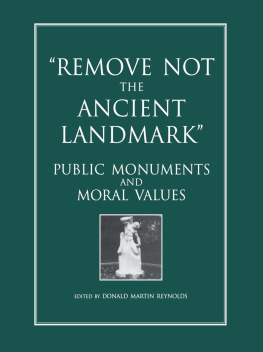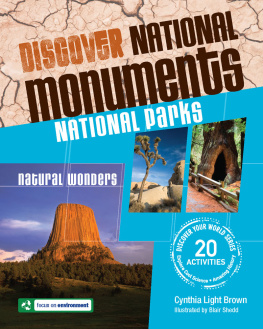First published 2009 by M.E. Sharpe
Published 2015 by Routledge
2 Park Square, Milton Park, Abingdon, Oxon OX14 4RN
711 Third Avenue, New York, NY 10017, USA
Routledge is an imprint of the Taylor & Francis Group, an informa business
Copyright 2009 Taylor & Francis. All rights reserved.
No part of this book may be reprinted or reproduced or utilised in any form or by any electronic, mechanical, or other means, now known or hereafter invented, including photocopying and recording, or in any information storage or retrieval system, without permission in writing from the publishers.
Notices
No responsibility is assumed by the publisher for any injury and/or damage to persons or property as a matter of products liability, negligence or otherwise, or from any use of operation of any methods, products, instructions or ideas contained in the material herein.
Practitioners and researchers must always rely on their own experience and knowledge in evaluating and using any information, methods, compounds, or experiments described herein. In using such information or methods they should be mindful of their own safety and the safety of others, including parties for whom they have a professional responsibility.
Product or corporate names may be trademarks or registered trademarks, and are used only for identification and explanation without intent to infringe.
Library of Congress Cataloging-in-Publication Data
Phillips, Cynthia, 1973-
Ancient monuments/Cynthia Phillips and Shana Priwer.
p. cm. (Frameworks)
Includes bibliographical references and index.
ISBN 978-0-7656-8123-2 (hardcover: alk. paper)
1. Architecture, AndentJuvenile literature. 2. Megalithic monumentsJuvenile literature. I. Priwer, Shana. II. Title.
NA210.P49 2008
732dc22
2007040697
Editor: Peter Mavrikis
Production Manager: Henrietta Toth
Editorial Assistant and Photo Research: Alison Morretta
Program Coordinator: Cathy Prisco
Design: Patrice Sheridan
Line Art: Foxbytes
PICTURE CREDITS: Cover: Photographers Choice/Getty Images; title page: Stone/Getty Images; pages 6, 19, 25, 34, 69: Bridgeman Art Library/Getty Images; pages 10, 12, 36, 48, 80, 89: National Geographic/Getty Images; pages 11, 46, 57: Photographers Choice/Getty Images; pages 13, 15, 16, 18, 27, 39, 44, 49, 58, 60, 64, 70, 75, 90, 98: FoxBytes; pages 17, 21, 22, 42, 62: Stone/Getty Images; pages 26, 29, 40, 56, 76, 78, 81: De Agostini Picture Library/Getty Images; pages 28, 47: Getty Images; pages 33, 61, 66, 75, 104 (top): Robert Harding World Imagery/Getty Images; page 41: Dorling Kindersley/Getty Images; page 50: Gallo Images/Getty Images; pages 55, 82: Scala/Art Resource, NY; page 59: Time & Life Pictures/Getty Images; page 62: Vanni/Art Resource, NY; page 65: Taxi/Getty Images; pages 77, 85: Roger Viollet/Getty Images; pages 86, 87: Bridgeman Art Library; page 90: SEF/Art Resource, NY; page 92: Photonica/Getty Images; pages 93, 105: Werner Forman/Art Resource, NY; page 94: Altrendo/Getty Images; page 101: China Span/Getty Images; page 102: Axiom Photographic Agency/Getty Images; page 104 (bottom): DAJ/Getty Images; page 106: Sebun Photo/Getty Images; back cover: Photographers Choice/Getty Images.
ISBN 13: 9780765681232 (hbk)
Architecture has undergone sweeping development since the beginning of time. In biblical days, most architecture was temporary because it accommodated nomadic populations. As communities began to grow roots, so did their architecture. Whether residential, commercial, religious, or civic, structures of permanence slowly appeared on the global landscape.
Over time, specific aesthetics and structural techniques were developed in different parts of the world. The knowledge of physical sciences became more advanced and, as a result, engineers responded by creating increasingly complex works that challenged previous notions. Temples became more elaborate, buildings grew ever taller, and bridges spanned bodies of water that only boats had dared to cross before. Once science and design crossed paths, there was no turning back.
The goal of the FRAMEWORKS series is to provide insight into the science behind the structures that are part of our everyday lives. Dams require advanced hydroelectric technology; the Egyptian pyramids paved new paths in the transport and construction of stone structures. Basic concepts from mathematics, physics, and engineering help illustrate the science that supports the creation of increasingly complex structures.
This series assumes no prior knowledge of advanced math and physics but rather builds up the readers understanding by explaining scientific concepts in words, as well as equations. Engaging examples are used to illustrate ideas such as mass, force, speed, and energy. Case studies from real-world projects demonstrate the concepts. Famous disasters also serve an important purpose in showing how even for professional architects and engineers, gaining knowledge is a slow and gradual task.
ANCIENT MONUMENTS describes known examples of some of humankinds first built creations. The term ancient monument is somewhat ambiguous. For our purposes, it refers to any early manmade structure of architectural or historical interest. The Egyptian pyramids were a form of ancient monument that used architectural design to honor the political leaders of the day as well as major deities. The pyramids at Giza required an unprecedented workforce and were equally extraordinary in terms of scale and longevity.
The ancient Greeks and Romans used elaborately sculpted materials and relied increasingly on science and mathematics in their building practices. The Greeks developed a system of architectural hierarchies that has been imitated by virtually every subsequent civilization. The Romans built on the knowledge they had obtained from the Greeks and made further scientific advances that allowed even greater feats of engineering.
The stone megaliths of England and Scotland show how some examples of early architecture excelled in their simplicity. Sites such as Stonehenge and Avebury said more with a few stones than later cultures were able to say with the most elaborate buildings. Equally indicative of its culture and society was Mesoamerican architecture, found in modern-day Mexico and Central America. Amazing pyramids and courts were built in many locations, and the remains of some of these have acoustic properties that baffle todays engineers.
The architecture of the ancient Middle East created an entirely new aesthetic based on the concepts of patterns and geometry. From the ziggurat of Teppe Sialk to the Dome of the Rock, elaborate decoration was based on both math and nature, bringing the two together in true harmony. This tradition is echoed by the architecture of ancient China and Japan, where a fusion and balance with nature was one of the most essential components of architecture, society, culture, and daily life. As Buddhism grew to be the prevalent religion, Chinese architecture was coming into its own, developing distinct stylistic elements that emphasized the precious relationship between humans, deities, and the natural environment.
The FRAMEWORKS series provides an entertaining and educational approach to the science of building. Read on to learn about the ways in which science literally supports our built environment.










